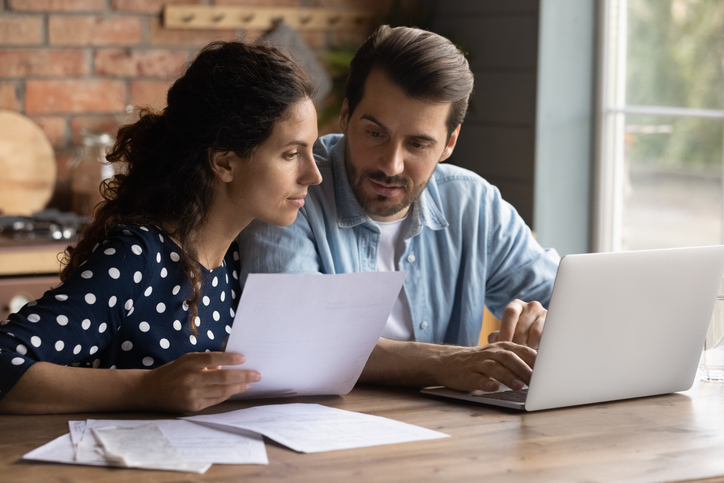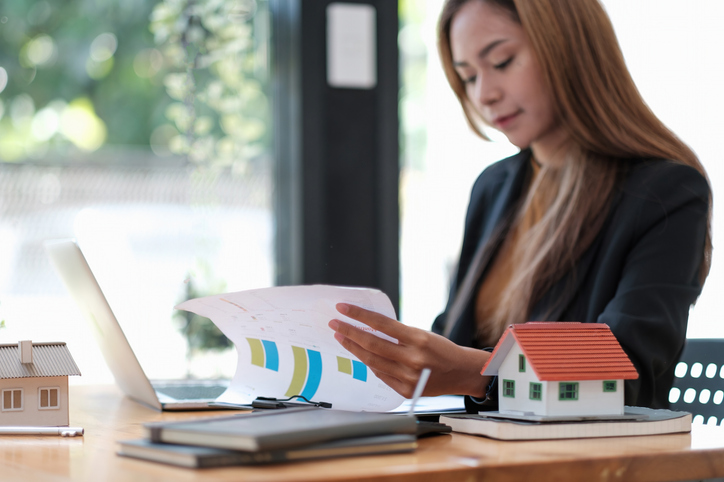Converting a rental property into a primary residence is a significant financial move with potential tax implications that necessitate careful planning. By leveraging tools like Section 121 of the IRS code and 1031 exchanges, homeowners can navigate the complexities of this process. However, understanding the intricacies of these laws is crucial. Here’s how to convert a rental property into a primary residence the right way.
A financial advisor can help optimize your real estate portfolio to lower your tax liability.
How to Convert Rental Property to a Primary Residence
Converting a rental property into a primary residence is possible, but doing so can have unwanted tax implications if you go in blind. Fortunately, tax exemptions are available through Section 121 of the IRS code and 1031 exchanges. Depending on the situation, you can apply one or both of these tools to minimize your tax burden when converting a rental property. Here are how these two tools work:
1. Section 121 Exclusion
Section 121 of the Internal Revenue Code exempts up to $250,000 (or $500,000 for a married couple filing jointly) of capital gains from the sale of a primary residence if you’ve owned and lived in the property for at least two of the past five years.
To qualify, you need to have owned the property and lived in it as your primary residence for at least two years out of the five years leading up to the sale. While a 1031 exchange affects this exclusion, they can work together to create a tax advantage, as you’ll see in later sections.
2. 1031 Exchange
A 1031 exchange, also known as a like-kind exchange, allows you to delay capital gains taxes when selling an investment property by purchasing a similar property with the proceeds. You can defer these taxes in perpetuity every time you sell an investment property by acquiring other investment properties of like kind.
Once you’ve sold a rental property, you have 45 days to identify potential replacement properties for a 1031 exchange. You can identify a property with the same price tag or multiple properties with a combined value of 200% or less of the value of the property you sold. You have 180 days from the sale of the original property to purchase the replacement property.
Tax Implications and Limitations
Section 121 exclusions and 1031 exchanges are complex financial moves with various rules and boundaries homeowners must follow to avoid penalties. Here’s what to remember:
Proof of Intent to Rent
The IRS scrutinizes intent when you convert a rental property to a primary residence. As a result, it’s vital to document your initial intent to rent out a property when you first acquired it. Specifically, you’ll provide rental agreements with tenants, public listings advertising the rental unit and financial records showing rental income.
Initial Rental Unit Use and Subsequent Residency Length
Renting out a 1031 exchange property complicates your ability to claim the Section 121 exclusion later because you must fulfill the requirements for both. Doing so is still possible, but you must complete a 24-month holding period where you rent out the property instead of living in it.
Specifically, every 12 months, you can live in the property for 14 days or 10% of the days you rented out the property, whichever is less. You must complete this 12-month process twice so your ownership lasts for 24 months without using the property as your primary residence.
After this period expires, you can move into the property and make it your home. Then, to qualify for a Section 121 exclusion, you must treat the property as your primary residence for at least two years out of the five years that precede selling the home.
Single Ownership
The Section 121 exclusion is available to individuals or married couples filing jointly. This tax break is unavailable if a company, group, or business partnership owns the property.
Depreciation Recapture
Owning a rental property means you can take a specific tax deduction for asset depreciation every year. However, you’ll owe the deducted amount if you sell the property after turning it into your primary residence. This aspect can erode the Section 121 exclusion you receive when selling.
Five-Year Holding Period for Section 121
Tax laws dictate a five-year holding period for 1031 exchanges that become primary residences. Specifically, you must own the property for a total of five years or more to receive a Section 121 exclusion.
For example, say you purchase a property and rent it out for two years. You then decide to live in the property as your primary residence for two years, resulting in a four-year holding period. You won’t be eligible for a Section 121 exclusion if you sell the property at that time. Instead, you must wait at least one more year so that you’ve held the property for five years.
Allocation of Gain
An update to the tax code applies to properties acquired after 2009. Specifically, the 121 exclusion shrinks according to how many years you rented out the property versus treating it as your primary residence.
For example, say you buy a rental property in 2018 and rent it out for three years. Then, you convert the property to your primary residence. You live in the property for five years, resulting in a seven-year holding period in total (two years renting out plus five years as your primary residence). The two rental years create a long-term capital gains allocation in the following way: you’ll owe 2/7ths of the capital gains taxes you incur and can exclude 5/7ths from taxation.
Leveraging Sections 1031 and 121 for Tax Advantages

Here’s an example to draw together the points about 1031 exchanges and Section 121 exclusions, along with their implications and requirements:
Rental Property Circumstances
Say that you have a small piece of commercial real estate valued at $300,000 that isn’t performing well. You bought this commercial real estate for $200,000, so you can sell it for a $100,000 profit.
You sell the commercial real estate and buy a single-family home for $300,000. Because you acquired a similarly valued real estate investment, you use a 1031 exchange to delay paying capital gains taxes on the $100,000 from selling the commercial real estate and $30,000 of depreciation recapture taxes.
You rent out the property for four years, and then upon retiring, you decide to spend your golden years in the countryside. So, you convert the rental property into your primary residence for the next five years until you decide to sell your home and move to a warmer climate.
Remember, your 1031 exchange from the past means you’re liable for the capital gains taxes on the $100,000 profit you made when you sold your initial investment property to buy the one in the countryside. Fortunately, your nine-year holding period qualifies you for a Section 121 exemption, mitigating your tax burden.
The property has appreciated to a $650,000 value. You’ve put $50,000 of work into the home, so your cost basis is $350,000. Your capital gain upon selling the property is $300,000. In addition, the deferred $100,000 of capital gains from the sale of your initial investment property and the $30,000 of depreciation recapture taxes are in play.
Tax Implications
Therefore, you face $400,000 of long-term capital gains. Fortunately, you are eligible for a Section 121 exclusion. Specifically, you lived in the home for five out of the nine years you owned it. So, you can exclude 5/9ths, or 55%, of your capital gains. $400,000 x 0.55 = $220,000. This leaves you with $180,000 that the government will tax.
Your income places you in the 15% bracket for capital gains taxes. So, $180,000 x 0.15 = $27,000 of capital gains taxes on the sale of the home. Plus, you owe $30,000 of depreciation recapture taxes, creating a total tax bill of $57,000 when you sell.
Additional Considerations When Converting Rental Property to Primary Residence
Here are five common tips to help you successfully convert a rental property to a primary residence:
- No contingencies: When you acquire a property through a 1031 exchange, don’t agree to any contingencies about converting the property. You need to show consistent, indisputable proof that you intended to rent out the property when you purchased it.
- Delay renovations: Similarly, only by performing renovations the property become habitable and up to code so you can rent it out. On the other hand, renovations matching your preferences, such as a remodeled bathroom or in-ground pool, can indicate that you planned to live in the property when you first purchased it as a rental.
- Document rental activity: Keep clear records of the rental income you receive from the property. This documentation helps establish the property’s use as a rental for at least two years.
- Don’t discuss moving in: When you perform the 1031 exchange and rent out the property, keep your plans to turn the home into your primary residence to yourself. Again, the function of the property for the first two years you own it is solely to rent out. Otherwise, you jeopardize your ability to use a 121 exclusion down the road.
- Ensure the rental unit’s validity: For the home to be a rental property, it must follow any applicable HOA codes, local rental laws and federal regulations. Failure to comply with these rules can demonstrate that you didn’t want to rent out the property and prevent you from receiving the 1031 and 121 tax benefits.
Can I Change My Mind After a 1031 Exchange?
If you decide you no longer want to go through with the 1031 exchange, you can reverse the transaction. However, you may have to hold the property for a specific period before reversing it, and you will be liable for capital gains taxes on the original property’s sale. Additionally, any depreciation recapture that you deferred would become immediately due.
Therefore, it’s recommended to consult with a qualified tax advisor or attorney if you’re considering reversing a 1031 exchange. They can provide specific guidance based on your situation and help you understand the potential tax consequences.
Bottom Line

Converting a rental property into a primary residence involves careful planning and consideration of various tax implications. Section 121 of the IRS code and 1031 exchanges offer valuable tools to minimize tax burdens in this process. However, homeowners must navigate rules and boundaries, such as proof of intent to rent, rental period requirements and the five-year holding period. Taking these considerations into account can lead to a successful transition from rental property to primary residence while optimizing tax benefits.
Tips for Converting a Rental Property to a Primary Residence
- Converting a rental property you purchased through a 1031 exchange is more likely to succeed if you create a detailed plan ahead of time. If you’re not sure where to start or need help outlining each step, a financial advisor can provide expertise on completing a 1031 exchange if you own an investment property. Finding one doesn’t have to be hard. SmartAsset’s free tool matches you with vetted financial advisors who serve your area, and you can have a free introductory call with your advisor matches to decide which one you feel is right for you. If you’re ready to find an advisor who can help you achieve your financial goals, get started now.
- Converting rental property means turning the home into a residence. If you’re torn on how to invest your money, here’s a guide on deciding between commercial or residential real estate investments.
Photo credit: ©iStock/Inside Creative House, ©iStock/fizkes, ©iStock/Natee Meepian
